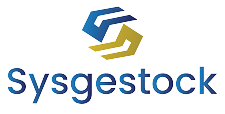
Maximize Efficiency and Minimize Costs: The Ultimate Guide to Choosing the Right Inventory Management Software
Are you ready to revolutionize your inventory management? In today’s fast-paced business landscape, the right inventory management software can make all the difference. From boosting efficiency to cutting costs, it’s the key to streamlined operations. But with a myriad of options available, how do you choose the perfect fit for your business? Look no further! Our ultimate guide is your go-to resource for navigating the complex world of inventory management software. Whether you’re a small startup or a large enterprise, we’ve got you covered.
We’ll dive into the essential features to consider, the benefits of each type of software, and the potential pitfalls to avoid. Join us as we unravel the secrets to maximizing efficiency and minimizing costs through expert software selection. Get ready to unlock your business’s full potential and take your operations to the next level. It’s time to bid farewell to inventory management headaches and embrace smooth, cost-effective processes that propel your business forward.
The importance of inventory management
Effective inventory management is the backbone of any successful business. It ensures that you have the right products in the right quantities at the right time, minimizing stockouts and overstock situations. This not only enhances customer satisfaction but also optimizes cash flow and reduces carrying costs. Without efficient inventory management, businesses risk lost sales, excessive carrying costs, and operational inefficiencies. The right inventory management software can address these challenges and provide a competitive edge in the market.
Inventory management software comes in various forms, each catering to specific business needs. The three primary types of inventory management software are perpetual inventory systems, periodic inventory systems, and Just-In-Time (JIT) inventory systems. Perpetual inventory systems offer real-time tracking of inventory levels, costs, and sales, providing up-to-date insights into stock positions. Periodic inventory systems, on the other hand, involve periodic physical counts of inventory to update stock levels. JIT inventory systems focus on minimizing inventory levels by synchronizing production with customer demand.
Types of inventory management software
When evaluating inventory management software, it’s crucial to consider key features that align with your business requirements. The software should offer inventory tracking, allowing you to monitor stock levels, movement, and reorder points. Additionally, it should support barcode scanning and RFID technology for accurate and efficient inventory management. Integration with other business systems, such as accounting and sales, is essential for seamless data exchange and process optimization. Advanced reporting and analytics capabilities can provide valuable insights into inventory performance and trends, aiding in strategic decision-making.
Key features to look for in inventory management software
Selecting the right inventory management software involves a strategic approach tailored to your business needs. Begin by conducting a thorough assessment of your current inventory processes, identifying pain points and areas for improvement. Engage key stakeholders, including warehouse managers, finance personnel, and IT professionals, to gather diverse perspectives and requirements. Research and compare different software solutions, considering factors such as scalability, user-friendliness, and vendor reputation. Request demos and trial periods to experience the software firsthand and assess its suitability for your operations.
Implementing inventory management software effectively requires careful planning and execution. Start by defining clear objectives and performance metrics to gauge the software’s impact. Provide comprehensive training to employees to ensure seamless adoption and utilization of the software. Regularly monitor and evaluate the software’s performance, soliciting feedback from users and addressing any issues promptly. Continuous improvement and optimization are essential to maximizing the benefits of inventory management software.
How to choose the right inventory management software for your business
To fully leverage the capabilities of inventory management software, seamless integration with other business systems is imperative. Integration with accounting software enables accurate financial reporting and cost analysis, aligning inventory data with overall financial performance. Integration with customer relationship management (CRM) systems facilitates a holistic view of customer interactions and purchasing patterns, aiding in demand forecasting and inventory planning. Furthermore, integration with supply chain management systems streamlines procurement, vendor management, and order fulfillment processes.
Training and support are crucial components of successful inventory management software implementation. Comprehensive training programs should be tailored to different user roles, ensuring that employees understand the software’s functionalities and can utilize them effectively. Ongoing support and access to knowledgeable technical resources are vital for troubleshooting issues, addressing user queries, and staying updated on software enhancements. Reliable customer support and regular software updates contribute to a positive user experience and long-term satisfaction.
Implementing inventory management software effectively
Investing in inventory management software entails both direct and indirect costs. Direct costs include software licensing fees, implementation costs, and ongoing subscription or maintenance fees. Indirect costs encompass training expenses, potential productivity disruptions during software deployment, and the opportunity cost of not choosing the most suitable software for your business. However, the benefits of improved inventory accuracy, reduced carrying costs, and enhanced operational efficiency can far outweigh the initial investment. Careful cost-benefit analysis is essential in evaluating the long-term value of inventory management software.
Case studies offer valuable insights into the real-world impact of inventory management software. By examining successful implementations in similar industries or business sizes, you can gain practical knowledge and best practices. Case studies provide a glimpse into the challenges faced, the solutions implemented, and the tangible outcomes achieved. They serve as a source of inspiration and guidance, illustrating how inventory management software can transform businesses and drive tangible results.
Integrating inventory management software with other business systems
Implementing inventory management software effectively is crucial for ensuring a smooth transition and reaping the maximum benefits. It starts with a comprehensive assessment of your current inventory processes and identifying the pain points that need to be addressed. Understanding the specific needs of your business, such as batch tracking, multi-location support, or integration with e-commerce platforms, is essential in selecting the most suitable software.
Next, it’s imperative to involve key stakeholders from various departments in the decision-making process. Their insights can provide valuable perspectives on how the software will impact their daily tasks and overall workflow. Additionally, seeking input from the warehouse and logistics teams can shed light on specific requirements for seamless operations. By involving the right people from the start, you can ensure a more cohesive and successful implementation.
Once the software is selected, a well-defined implementation plan is essential. This includes setting clear objectives, establishing a timeline, and allocating resources for training and support. Effective communication with all stakeholders regarding the upcoming changes and the benefits of the new software is also crucial for garnering their support and cooperation.
Training and support for inventory management software
Seamless integration with other business systems is a key factor in maximizing the benefits of inventory management software. Whether it’s syncing with your accounting software, e-commerce platform, or customer relationship management (CRM) system, the ability to exchange data in real-time eliminates manual entry errors and ensures consistency across all platforms.
The integration process should start with a thorough analysis of the existing systems and their compatibility with the chosen inventory management software. It’s essential to work closely with the software provider and your internal IT team to develop a robust integration strategy that minimizes disruptions to daily operations. Testing the integration thoroughly before going live is crucial for identifying and resolving any potential issues.
Furthermore, establishing clear data governance and security measures is paramount when integrating inventory management software with other business systems. Ensuring that sensitive information is protected and only accessible to authorized personnel is vital for maintaining the integrity of your data. Regular audits and updates to security protocols should be part of your ongoing strategy to safeguard your business information.
The costs of inventory management software
Investing in comprehensive training and support for your team is a fundamental aspect of successful inventory management software implementation. From initial onboarding to continuous education on new features and updates, providing the necessary knowledge and resources empowers your employees to harness the full potential of the software.
The training program should be tailored to the specific roles and responsibilities of your team members. Hands-on workshops, video tutorials, and interactive online modules can cater to different learning styles and ensure that everyone is equipped with the skills to navigate the software confidently. Additionally, designating internal champions who are proficient in the software to provide ongoing support and guidance can enhance the learning experience for all users.
A responsive support system from the software provider is equally essential for addressing any technical issues or inquiries that may arise. Access to a dedicated support team, comprehensive documentation, and a user community can provide valuable resources for troubleshooting and sharing best practices. Regular feedback from your team on their experience with the software and the support received can also help in identifying areas for improvement and refining the overall user experience.
Case studies of successful inventory management software implementation
When evaluating the costs of inventory management software, it’s important to consider both the initial investment and the long-term value it brings to your business. While the upfront expenses may seem significant, the potential for increased efficiency, reduced errors, and improved decision-making capabilities can lead to substantial cost savings in the long run.
The pricing models for inventory management software can vary, including one-time licensing fees, subscription-based plans, or usage-based pricing. Understanding the different cost structures and their implications on your budget and scalability is essential for making an informed decision. Additionally, factoring in any additional costs for customization, integrations, and ongoing support is crucial for a comprehensive assessment of the total cost of ownership.
It’s also important to weigh the potential return on investment (ROI) of the software. Consider the impact on your operational costs, inventory turnover, order fulfillment efficiency, and customer satisfaction. Conducting a cost-benefit analysis that compares the projected benefits against the total cost of ownership can provide valuable insights into the financial impact of implementing the software.
Conclusion
Real-world examples of successful inventory management software implementation can offer valuable insights and inspiration for businesses seeking to optimize their operations. Case studies that showcase companies similar to yours, facing comparable challenges and achieving measurable results, can provide a practical understanding of the software’s potential impact.
One such case study is a mid-sized e-commerce company that struggled with inventory inaccuracies and order fulfillment delays due to manual processes. By implementing an advanced inventory management software with real-time tracking and automated replenishment capabilities, the company achieved a 30% reduction in order processing time and a 20% decrease in carrying costs. The software’s seamless integration with their e-commerce platform also enabled them to maintain accurate inventory levels and prevent stockouts, resulting in a 15% increase in customer satisfaction and repeat purchases.
Another compelling case study is a distributor in the manufacturing industry that faced challenges with inventory visibility across multiple warehouses and stock discrepancies. After deploying a robust inventory management software with multi-location support and barcode scanning capabilities, the distributor experienced a 25% improvement in inventory accuracy and a 40% reduction in excess stock levels. The software’s reporting and analytics features also empowered them to optimize their inventory levels, leading to a 12% increase in overall warehouse efficiency and a substantial reduction in carrying costs.
